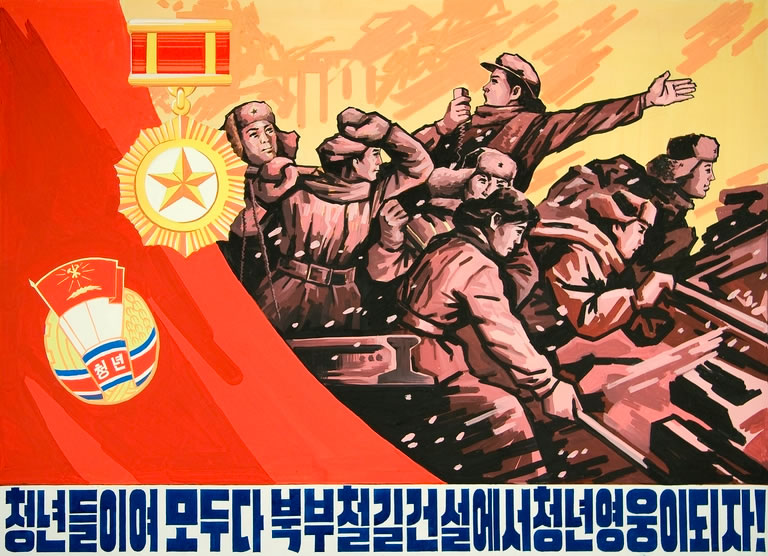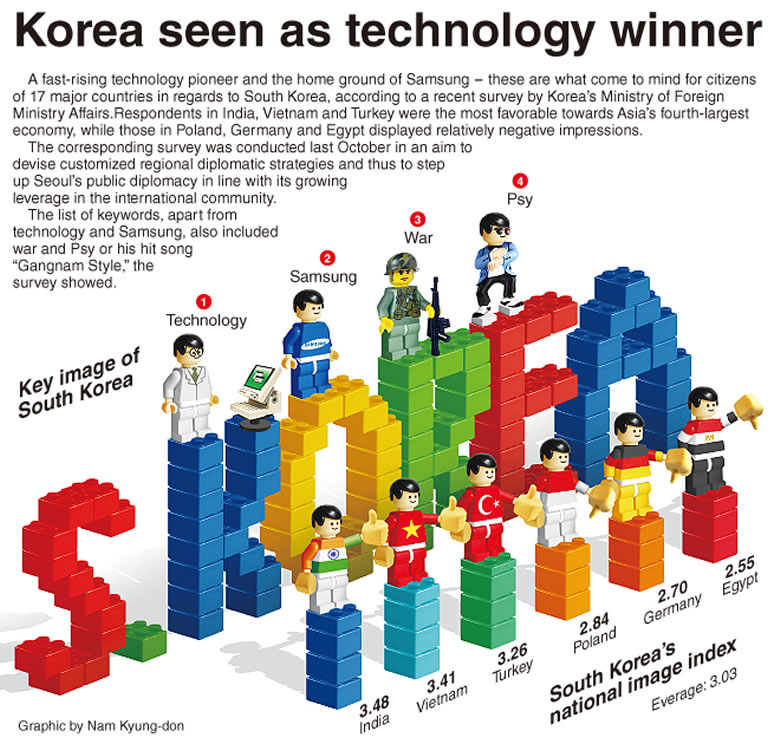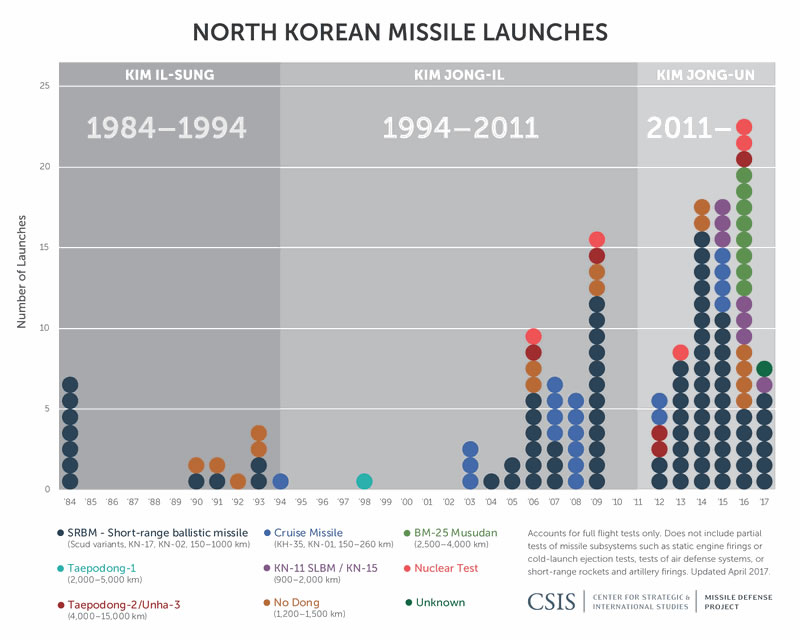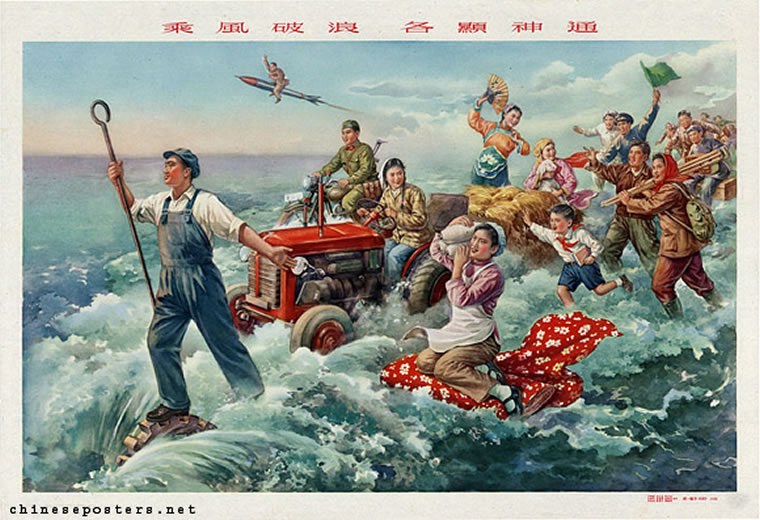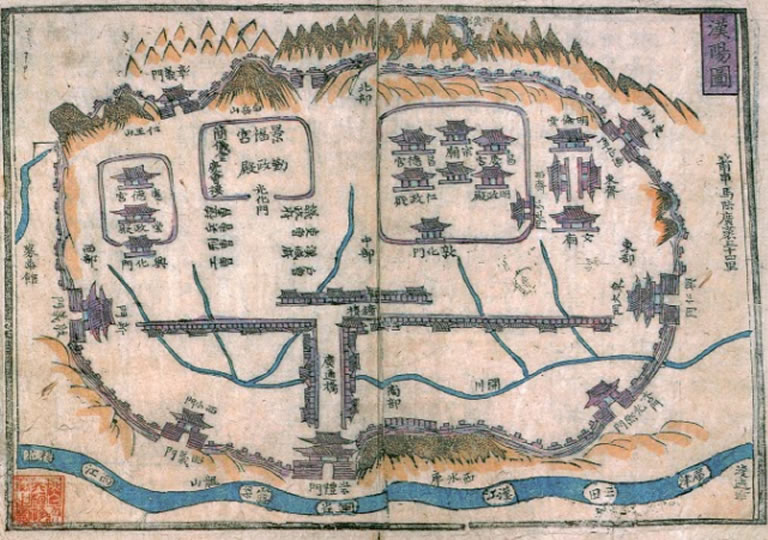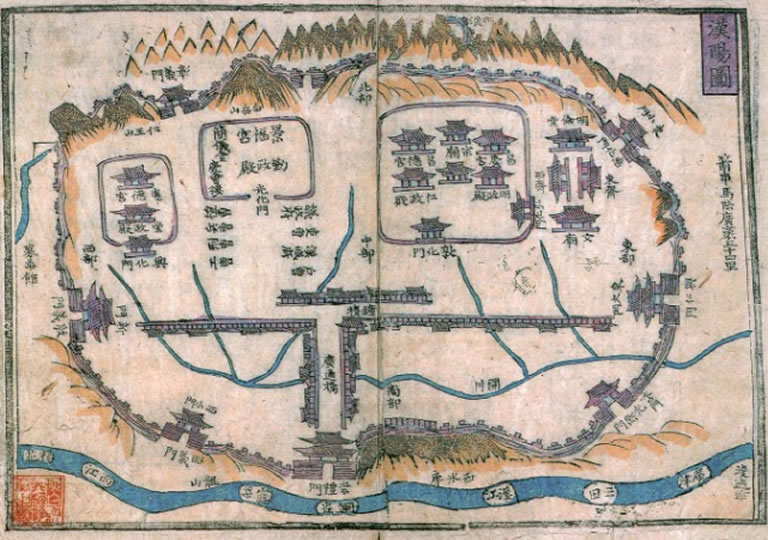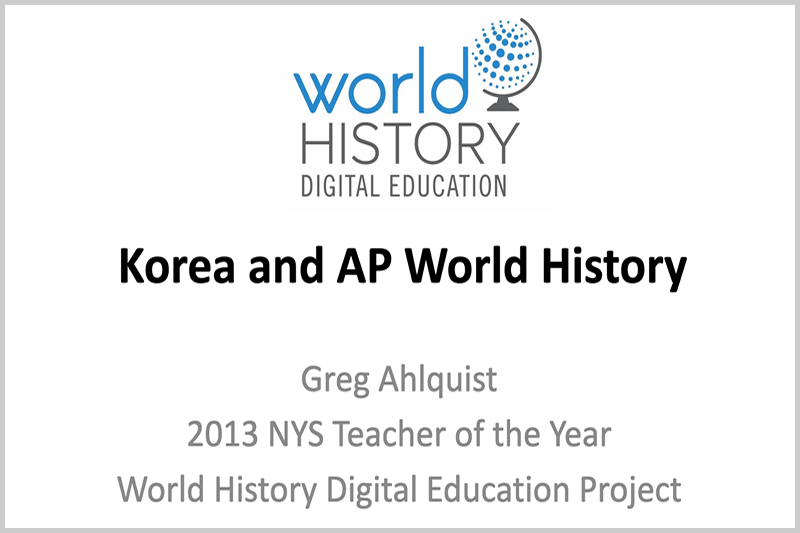We offer below a set of free resources for teachers of Advanced Placement World History on the Korean War. AP World teachers can use our curriculum guides on comparison, contextualization, and causation and continuity/change (CCOT) to help students better understand the Korean War.
AP World Modules
Comparison
After the Korean War (1950-1953), the role of the state in the domestic economy varied, and new institutions of global associations emerged and continued to develop throughout the twentieth century.
This module focuses on comparison through an examination of South and North Korea. The two activities lead toward a document-based question (DBQ) that addresses the economic impact of differing ideologies.
What is the state’s role in developing the economy?
(Day 1)
Students work collaboratively to compare the roles that the state, ideology, and historical developments played in the development of North and South Korea’s economies after World War II until the 1980s. During the activity, students construct evidence-based interpretations using North and South Korean sources, culminating in a thesis statement and contextualization.
This activity is designed to engage students in historical thinking as they compare sources from pre-assigned homework describing the state’s role in developing the North and South Korean economies. Each was shaped by a common past and both were set at odds during the Cold War. Students—working in collaborative pairs—will use evidence to answer questions based on their interpretation of documents, backed with evidence from one or more of the documents. Students will identify similarities and differences based on how they cooperatively answered the question. Students will use their homework, outside evidence, and collaborative work to explain, individually, the similarities and differences. At the end of class, students will construct a historical context and write a thesis statement that answers the Long Essay Question (LEQ) prompt:
After 1900, the role of the state in the domestic economy varied. New institutions of global associations emerged and continued to develop throughout the century. Develop an argument that evaluates the extent to which the governments of North and South Korea differed in developing their economies.
How did economic models, ideologies, and political structures differ between North and South Korea after 1950?
(Day 2)
Students work in groups to apply content knowledge from pre-assigned homework readings about North and South Korea to a sequence of puzzles in an “escape room” scenario. The activity involves some advance teacher and student preparation, but the puzzle work and group interaction reinforce material that is sometimes challenging.
This activity is designed to engage students in problem-solving activities to apply content knowledge from pre-assigned homework readings about North and South Korea. The activity is centered around the concept of an escape room scenario, applying content about North and South Korea to a sequence of three puzzles. Students should have had some introduction to East Asian economic and political development as part of the overall course. The activity involves some advance teacher preparation, but the student activities, interaction, and checks for understanding help reinforce material that is sometimes challenging to teach.
DBQ: Evaluate the extent to which political ideologies affected the economies of Korea after 1945
(Day 3)
Students can practice three targeted document-based question skills: thesis writing, contextualization, and sourcing. Students do not need extensive knowledge of Korean history. Teachers could alternatively assign students to write the full AP-aligned DBQ.
This activity is designed to engage students in three particular skills involved in writing a document-based question: thesis statement, contextualization, and sourcing. Students do not need to have extensive knowledge of Korean history, although the activities for Day 1 and Day 2 provide useful content introduction to this DBQ activity. Students will have the entire class period to engage with three skills involved in writing and evaluating the document-based question, which comprises 25% of their AP World History exam score. Teachers should note that they can expand this lesson to have students write a full DBQ if time permits.
Contextualization
After the Korean War (1950-1953), the role of the state in the domestic economy varied, and new institutions of global associations emerged and continued to develop throughout the twentieth century.
This module focuses on contextualization through an examination of South and North Korea. The two activities lead toward a document-based question (DBQ) that has students evaluate the extent to which the Cold War affected economic and technological development.

To what extent is South Korea a manufacturing or information economy?
(Day 1)
Students work collaboratively to better understand the current context surrounding South Korean economic development. Students will examine secondary sources to develop an understanding of South Korea’s economic and technological developments in comparison to other states.
Students will explore economic developments in South Korea through a structured source analysis of common and paired readings, referred to as the Box Protocol. This activity is designed to help students practice their source-analysis skills and deepen their understanding of the contextualization behind South Korea’s economic development after the Korean War and into the twenty-first century. This task is designed for students with little to no understanding of the Information Age and economic liberalization trends in the post-World War II era. Students will need prior knowledge of basic economic concepts like gross domestic product (GDP) and conglomerates to access the homework and opening stages of the activity. Students should finish the activity with a greater understanding of the role technology played in South Korea’s economic development and greater insight into unique economic strategies used by South Korea to improve its economic standing in the second half of the twentieth century.
How are North and South Korea impacted by the Cold War, economic liberalization, and Information Age technological developments?
(Day 2)
Students work collaboratively to investigate the impact of the Cold War, economic liberalization, and the Information Age on North and South Korea. Students will read paired sources, one on North Korea and one on South Korea, to compare the responses of each to the three twentieth- and twenty-first-century historical developments.
This activity is designed to engage students in an analysis of the impact of the Cold War, economic liberalization, and Information Age technological developments on North and South Korean development. Students should have general knowledge of each of the three historical developments mentioned above. Students will work in collaborative pairs on an analysis of one of three sets of paired sources. Each set explores one of the three historical developments—the Cold War, economic liberalization, or the Information Age—through North and South Korean sources. In the second stage of the lesson, student pairs will join other pairs to develop a short presentation to share their learning. At the conclusion of the lesson, students will demonstrate their learning by writing responses to Short Answer Questions (SAQs).
Teachers should note that students are initially divided into pairs with only one set of sources to allow for deeper exploration of one historical development. The lesson could be extended to allow pairs to explore all three historical developments, if time permits. The sources will demonstrate how North and South Korea responded to the larger historical developments of the period. For instance, though the second historical development is economic liberalization, the North Korean reaction was to reject this trend and focus instead on continued central planning according to communist command-economy principles, while South Korea introduced elements of central planning and state coordination onto a capitalist framework. The Information Age sources likewise reflect the distinct differences between the types of technology on which North and South Korea focused.
DBQ: Evaluate the extent to which the Cold War affected economic and technological development.
(Day 3)
Students can write (and/or peer grade) an AP-aligned DBQ. A set of annotated Scoring Guidelines are provided for the teacher and/or student to use in assessing student work and offering feedback.
Causation and Continuity/Change
States responded in a variety of ways to the economic challenges of the twentieth century.
This module focuses on causation and CCOT (Continuity and Change Over Time) through an examination of the political and economic development of South Korea.

How are belief systems utilized to strengthen the legitimacy of rulers or regimes?
(Day 1)
Students work collaboratively to interpret a set of four sources. Students will analyze evidence to determine how several belief systems were utilized in Korea to legitimize rule.
This activity is designed to engage students in critical thinking about how states utilized belief systems to strengthen the legitimacy of their rulers and regimes. Students will benefit from some prior knowledge of Confucianism, Neo-Confucianism, and the cultural connection between China and the Korean peninsula. Students will view a collection of primary and secondary sources to better understand how Korean states—the Goryeo and Joseon Dynasties and the South Korean government—have utilized belief systems to strengthen their legitimacy over time. After the lesson, students will complete a short answer question based on a written primary source.
What caused the Economic Miracle in South Korea?
(Day 2)
Students work in jigsaw groups to analyze sources in an investigation of how South Korea was able to grow economically after the Korean War. Students are assigned one of three expert groups—corporations, government, or citizens—to explain the cause of the economic miracle in South Korea.
This activity is designed to develop student historical reasoning skills in causation and continuity and change over time (CCOT) through the use of primary and secondary sources. Students will focus on the reasons for South Korea’s economic miracle after the Korean War. This lesson is best used after students have acquired some background knowledge of the Cold War and global economic developments in the late twentieth century. Throughout the jigsaw lesson, students will use primary and secondary sources to make conclusions about how South Korea’s corporations, government, and citizens were able to achieve economic success after the Korean War. In these activities, students are asked to take on the role of a historian. Teachers should be aware that many contemporary historians grapple with this debate over South Korea's "economic miracle" and therefore, this activity can be an opportunity to encourage diverse interpretations by students, as well.
DBQ: Evaluate the extent to which Korean leaders utilized belief systems to strengthen their political power through the period from 600 CE to present
(Day 3)
Students practice up to three targeted document-based question skills: thesis writing, contextualization, and sourcing. Students will write the full essay and/or score peer essays if time permits.
This activity is designed to engage students in the particular skills involved in writing a document-based question (DBQ). Students would benefit from having had training in analyzing documents, practice in writing DBQs, and basic knowledge of belief systems such as Buddhism, Daoism, Shamanism, and especially Confucianism. Students do not need to have extensive knowledge of Korean history, although the activity for Day 1 serves as a strong content introduction to this DBQ activity. Students will have the entire class period to engage with the skills involved in writing and evaluating the DBQ, which comprises 25% of their AP World History exam score. Teachers can adapt this lesson as needed by asking students to write a full DBQ, using these directions to review the tasks needed for achievement, or by having students use the DBQ rubric to score the sample responses provided.
Greg Ahlquist Presentation
Slides from presentation by Greg Ahlquist, New York State Teacher of the Year: Korea and AP World History
More Free Resources for Teachers
Visit the curriculum page on the Korean War Legacy Foundation website for inquiries and other activities to help students understand the Korean War. Or search thousands of annotated oral history videos from Korean War veterans.


